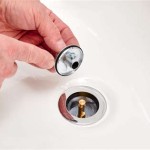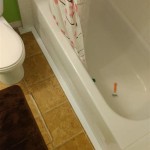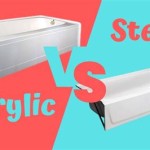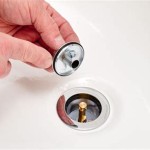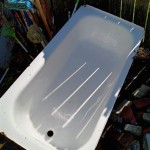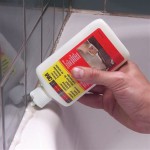Unclog Bathtub Drain Tool Kit: A Comprehensive Guide
A clogged bathtub drain represents a common household inconvenience, often stemming from a buildup of hair, soap scum, mineral deposits, and other debris within the drainpipe. Addressing this issue promptly and effectively is crucial to prevent further complications, such as slow drainage leading to stagnant water accumulation and potential damage to plumbing fixtures. An unclog bathtub drain tool kit provides a readily available solution for homeowners to tackle these clogs without resorting to potentially harmful chemical drain cleaners or incurring the expense of professional plumbing services.
The composition of an unclog bathtub drain tool kit varies depending on the manufacturer and intended use, but typically includes a selection of specialized tools designed to dislodge, retrieve, or dissolve the obstructing material. These tools are generally chosen for their ease of use and effectiveness in common drain blockage scenarios. Understanding the purpose and proper application of each tool within the kit enhances the likelihood of a successful drain unclogging effort.
Essential Components of an Unclog Bathtub Drain Tool Kit
A well-equipped unclog bathtub drain tool kit will contain several essential components, each serving a specific function in the unclogging process. These tools are crafted to navigate the complexities of drainpipe systems and address blockages of varying severity.
Drain Snake (Plumbing Snake or Auger): The drain snake is perhaps the most versatile tool in the kit. It typically comprises a flexible metal cable with a coiled or corkscrew-shaped end. The cable is fed into the drain opening and advanced through the drainpipe, rotating as it progresses. The coiled end is designed to snag and break up the clog, allowing it to be either pulled back out of the drain or pushed further down the pipe towards the main sewer line. Drain snakes are available in varying lengths and thicknesses, with smaller, hand-operated snakes suitable for simpler clogs close to the drain opening, while larger, motorized snakes are better suited for more stubborn or deeply entrenched blockages.
The effectiveness of a drain snake lies in its ability to navigate the bends and curves of the drainpipe system. The flexible cable allows it to bypass obstacles and reach the source of the clog. The rotating action helps to dislodge the obstructing material, either by physically breaking it apart or by providing a means of gripping it for removal. Using a drain snake requires patience and care to avoid damaging the drainpipe. Overly aggressive handling can lead to scratches or punctures, potentially requiring costly repairs.
Drain Claw (Hair Clog Tool): A drain claw, sometimes referred to as a hair clog tool, is specifically designed to retrieve hair and other fibrous debris from drainpipes. It typically consists of a long, flexible plastic or metal shaft with a claw-like gripping mechanism at the end. The claw is inserted into the drain opening and maneuvered to ensnare the clog. The user then retracts the claw, pulling the accumulated debris out of the drainpipe.
Drain claws are particularly effective in unclogging bathtub drains because hair is a common culprit in these situations. The fine tines of the claw can easily entangle with hair, soap scum, and other build-up, allowing for efficient removal. Unlike chemical drain cleaners, drain claws provide a mechanical solution that avoids the risk of corrosion or damage to the drainpipe. They are also reusable, making them a more environmentally friendly option. The effectiveness of a drain claw is dependent on the accessibility of the clog. If the clog is located deep within the drainpipe, a drain snake may be a more suitable tool.
Plunger: The plunger is a classic and often overlooked tool for unclogging drains. While it may seem simplistic, a plunger can be remarkably effective in dislodging clogs that are not too deeply embedded. A standard cup plunger, with its hemispherical rubber cup, is commonly used for sinks and bathtubs. The cup is placed over the drain opening, creating a seal. The user then applies a series of forceful up-and-down motions, creating pressure that forces water back and forth through the drainpipe. This alternating pressure can help to break up or loosen the clog, allowing it to be washed away.
The success of a plunger depends on creating a tight seal around the drain opening. Ensure that the cup is fully submerged in water and that there are no gaps between the cup and the surface of the bathtub. For bathtubs with an overflow drain, plugging the overflow opening with a wet cloth or sponge will enhance the effectiveness of the plunger by preventing air from escaping. While plungers are relatively safe and easy to use, they may not be effective for more stubborn clogs or those located deep within the drainpipe.
Drain Brush: A drain brush is a specialized cleaning tool designed to scrub the interior surfaces of drainpipes. It typically consists of a long, flexible handle with a brush head at the end. The brush head may be made of nylon, wire, or other durable materials. The drain brush is inserted into the drain opening and used to scrub away accumulated debris, soap scum, and mineral deposits from the walls of the drainpipe.
Drain brushes are particularly useful for preventing clogs from forming in the first place. Regular use can help to remove build-up before it becomes a significant obstruction. They are also effective in cleaning drainpipes after a clog has been removed, ensuring that any remaining debris is cleared away. When selecting a drain brush, consider the size and shape of the brush head. A smaller brush head is better suited for narrower drainpipes, while a larger brush head can cover more surface area in wider pipes. Gentle, circular motions are recommended to avoid damaging the drainpipe walls.
Using Chemical Drain Cleaners Safely and Effectively (If Included)
Some unclog bathtub drain tool kits may include a chemical drain cleaner as a supplementary option. While chemical drain cleaners can be effective in dissolving certain types of clogs, they also pose potential risks to both the user and the plumbing system. Understanding the properties and proper usage of chemical drain cleaners is crucial for safe and effective application. Chemical drain cleaners typically fall into two categories: oxidizing or caustic. Oxidizing drain cleaners use chemicals like bleach or peroxides to generate heat and dissolve organic matter. Caustic drain cleaners use strong alkaline substances like sodium hydroxide (lye) to break down grease and hair. Both types of cleaners can be corrosive and harmful if not handled properly.
When using chemical drain cleaners, always wear appropriate personal protective equipment (PPE), including gloves, eye protection, and a mask. Follow the manufacturer's instructions carefully, paying close attention to the recommended dosage and contact time. Never mix different types of drain cleaners, as this can create dangerous fumes or explosive reactions. Ensure adequate ventilation in the work area to avoid inhaling harmful vapors. Pour the drain cleaner slowly and carefully into the drain opening, avoiding splashes or spills. Allow the cleaner to sit for the recommended time, then flush the drain thoroughly with hot water. If the clog persists after the first application, repeat the process or consider using a different method. Avoid using chemical drain cleaners as a regular preventative measure, as this can damage the drainpipes over time.
Always be aware of the potential risks associated with chemical drain cleaners. They can cause burns to the skin and eyes, and can damage or corrode drainpipes, especially older or more fragile pipes. In some cases, chemical drain cleaners can even solidify within the drainpipe, creating an even more stubborn blockage. If you are unsure about using a chemical drain cleaner, consult a professional plumber. The risks associated with chemical drain cleaners are significant enough that mechanical alternatives are often preferred. Proper ventilation is essential when using such substances.
Preventative Measures for Maintaining a Clear Bathtub Drain
Preventing clogs from forming in the first place is the most effective way to avoid the inconvenience and expense of dealing with blocked bathtub drains. Implementing a few simple preventative measures can significantly reduce the likelihood of clogs and ensure that the drain remains clear and free-flowing. These measures include regular cleaning, the use of drain screens, and proper disposal of waste.
Regular Cleaning: Regularly cleaning the bathtub drain area can help to remove accumulated hair, soap scum, and other debris before they have a chance to form a significant clog. After each shower or bath, inspect the drain opening and remove any visible hair or debris. Use a damp cloth or sponge to wipe away soap scum and mineral deposits from the drain cover and surrounding surfaces. Periodically flush the drain with hot water to help dissolve any remaining build-up. A mixture of baking soda and vinegar can also be used as a natural drain cleaner. Pour a cup of baking soda down the drain, followed by a cup of vinegar. Allow the mixture to fizz for 30 minutes, then flush with hot water. This will help to loosen and dissolve minor clogs.
Using Drain Screens: Drain screens are simple and inexpensive devices that fit over the drain opening and prevent hair and other debris from entering the drainpipe. They are available in various sizes and designs, including mesh screens, slotted screens, and pop-up stoppers with built-in screens. Drain screens are easy to install and clean. Simply place the screen over the drain opening and remove it periodically to clear away any accumulated debris. Drain screens are particularly effective in preventing hair clogs, which are a common cause of bathtub drain blockages.
Proper Disposal of Waste: Avoid disposing of items that can clog the drain, such as hair, grease, food scraps, and cotton balls. Place a wastebasket near the bathtub to encourage the proper disposal of these items. When shaving in the bathtub, use a drain screen to capture hair and dispose of it in the wastebasket. Avoid pouring grease or oil down the drain, as this can solidify and cause a blockage. If you need to dispose of grease or oil, collect it in a container and dispose of it properly. Avoid washing items that can shed fibers, such as rugs or mop heads, in the bathtub. Loose fibers can easily clog the drainpipe.
By consistently implementing these preventative measures, homeowners can significantly reduce the risk of bathtub drain clogs and maintain a clear and functional plumbing system. This proactive approach minimizes the need for frequent unclogging efforts and prevents the potential damage and inconvenience associated with blocked drains.

8 Pack Drain Clog Remover Plumbing Tool For Bathroom Shower Bathtub Cleaner Sink Unclogger Hair Catcher Stick Pipe Tub Com

Unclog Your Drains Instantly 6pcs Drain Clog Remover Tool Set 5pcs Plastic Hair 1pc Stainless Steel Cleaner Sticks For Sewer Toilet How To A Tub Sainaco Com

Unclog Your Drains Instantly 6pcs Drain Clog Remover Tool Set 5pcs Plastic Hair 1pc Stainless Steel Cleaner Sticks For Sewer Toilet How To A Tub Sainaco Com

5 Pack Hair Snake Drain Clog Remover Cleaning Tool Sink Suitable For Unclogging Kitchen Sinks And Bathtubs Toilets Sewer Pipe Tools Com

Flexisnake Drain Weasel Hair Clog Tool Starter Kit For Cleaning 3 Piece Dwpsk2 The Home Depot

Unclogging A Bathtub Drain Ridgid Snake

Unclog Drains Instantly Drain Clog Remover Tool Set Plastic Temu

How To Remove A Bathtub Drain Forbes Home

How To Unclog A Bathtub Drain

How To Unclog A Bathtub Drain Without Chemicals Family Handyman
Related Posts

